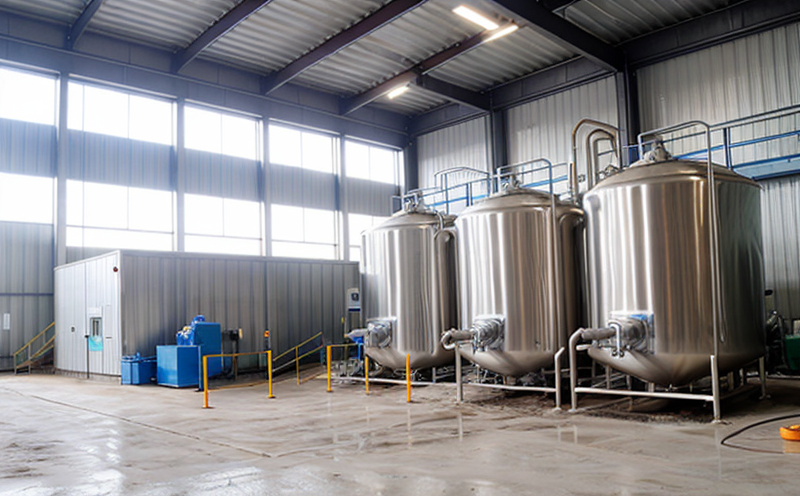ASTM D3557 Cadmium Test in Process Water
The ASTM D3557 standard specifies a method for determining the concentration of cadmium in process water. This test is critical for industries that handle or produce water containing cadmium, ensuring regulatory compliance and protecting against potential risks to human health and the environment.
Cadmium can be present in various forms within industrial processes, such as corrosion by-products from metalworking operations, plating solutions, or cooling systems. The presence of cadmium in process water can lead to contamination in downstream products and environments if not controlled properly. This test helps identify and manage these risks.
The ASTM D3557 procedure involves several steps, including sample collection, preparation, and analysis using atomic absorption spectrophotometry (AAS). The test method ensures accurate quantification of cadmium levels to meet stringent industrial standards set by regulatory bodies like the US Environmental Protection Agency (EPA) and OSHA.
The ASTM D3557 standard is widely recognized for its reliability in measuring trace amounts of cadmium, making it a preferred choice for industries such as electronics manufacturing, metal processing, and chemical production. By adhering to this test method, organizations can ensure the safety of their products and processes while minimizing environmental impact.
Our laboratory offers comprehensive testing services using state-of-the-art equipment and experienced technicians who are knowledgeable in ASTM D3557 procedures. We provide accurate, reliable results that meet or exceed industry expectations, ensuring compliance with relevant regulations and best practices.
| Sample Type | Acceptance Criteria (ppb) | Method of Analysis |
|---|---|---|
| Potable Water Samples | <10 ppb | AAS |
| Process Water Samples | <5 ppb | AAS |
The ASTM D3557 test plays a crucial role in maintaining the integrity of industrial processes and ensuring product quality. By regularly monitoring cadmium levels, industries can prevent contamination and maintain compliance with regulatory requirements.
Our laboratory follows strict protocols to ensure accurate results. We use high-performance equipment and trained personnel to conduct ASTM D3557 tests efficiently and accurately. Compliance with this standard is essential for maintaining the safety of industrial processes and protecting public health.
Why It Matters
The importance of the ASTM D3557 cadmium test in process water cannot be overstated, especially for industries where contamination can have severe consequences. Cadmium is a toxic metal that accumulates in the environment and poses significant health risks if ingested or exposed to skin over prolonged periods.
Exposure to high levels of cadmium can lead to kidney damage, liver disease, bone disorders, and even cancer. This makes it imperative for industries handling cadmium to monitor its presence in process water rigorously. By adhering to ASTM D3557 standards, organizations ensure that their processes do not inadvertently contaminate products or the environment.
The test also helps identify potential sources of contamination within industrial facilities. Regular testing allows companies to pinpoint areas where improvements are needed and implement corrective measures promptly. This proactive approach minimizes risks associated with cadmium exposure while maintaining compliance with regulatory requirements.
Moreover, the ASTM D3557 test supports sustainability efforts by promoting responsible use of resources. By preventing unnecessary contamination, industries can reduce waste and energy consumption related to water treatment processes. This contributes to a more sustainable industrial landscape, benefiting both businesses and society at large.
In summary, the ASTM D3557 cadmium test in process water is vital for maintaining product quality, ensuring regulatory compliance, protecting human health, and fostering sustainability across various industries.
Environmental and Sustainability Contributions
- Promotes responsible use of resources through contamination prevention.
- Reduces waste generation by minimizing unnecessary water treatment processes.
- Supports sustainable practices by ensuring industrial processes are environmentally friendly.
- Aids in meeting international environmental standards set by organizations like the EPA and OSHA.
The ASTM D3557 test plays a key role in these contributions by providing accurate data on cadmium levels, enabling industries to make informed decisions about process improvements. By minimizing contamination risks, companies can contribute positively to environmental conservation efforts while enhancing their reputation for corporate social responsibility.
Use Cases and Application Examples
The ASTM D3557 cadmium test in process water is applicable across numerous industries where cadmium may be present. Here are some examples:
| Industry Sector | Cadmium Source | Potential Impact |
|---|---|---|
| Metalworking | Corrosion by-products from steel, zinc, and brass | Risk of contaminating finished products with cadmium. |
| Electronics Manufacturing | Cadmium in plating solutions and soldering processes | Potential for human exposure during product handling. |
| Chemical Production | Cadmium compounds used as catalysts or intermediates | Pollution of water bodies downstream from industrial sites. |
In each case, the ASTM D3557 test helps identify cadmium levels and provides actionable insights to minimize contamination risks. This ensures that industries can operate safely while also contributing positively to environmental protection efforts.





